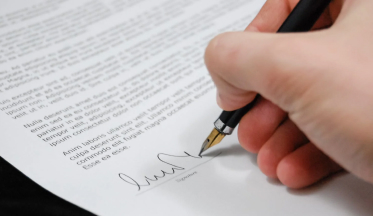Have Questions? Contact Us.
Since its inception, NYCLA has been at the forefront of most legal debates in the country. We have provided legal education for more than 40 years.
March 30, 2016
Bernadette Wilson
Acting Executive Officer, Executive Secretariat
Equal Employment Opportunity Commission
131 M St. NE
Washington, DC 20507
Re: FR Doc # 2016-01544
Comment on the Proposed Revision of the Employer Information (“EEO-1”) Report to Include Collection of Pay Data
Dear Ms. Wilson:
This letter is submitted by and on behalf of the New York County Lawyers Association’s (“NYCLA”) Labor Relations & Employment Law Committee (“LR&EL Committee”) and the Women in the Law Committee (“WITL Committee”) (together, “the Committees”). NYCLA membership, including that of the LR&EL and the WITL Committees, is comprised of a wide array of New York attorneys representing employers, employees, unions, and government.
The Committees support the proposal by the Equal Employment Opportunity Commission (“EEOC”) to collect pay data in future EEO-1 Reporting. The proposal would add reporting of employees’ W-2 earnings and hours worked to the data EEO-1 filers already are required to provide, which by law must be maintained in the ordinary course of business. The Committees applaud the EEOC’s attention to this important area, and support its broader goal of eradicating pay inequity.
The Committees have reviewed comments from objectors and believe they are insufficient to stifle this initiative. A common objection from employers is that the new reporting will open them to unwarranted investigations by the EEOC, where legitimate explanations may exist to account for pay disparities among employees who hold the same or similar positions, such as seniority or qualifications. However, those concerns should be minimal for employers who can substantiate legitimate explanations for disparities in pay. For one, there is no basis to conclude that the EEOC will elect to target minor or infrequent disparities over more systemic issues, or that the EEOC’s process for verification of legitimate pay rationales will impose any greater burden on employers than any other investigation it may conduct. With time, processes for further streamlining the investigation may easily be developed.
The additional data also will serve to identify significant pay disparity trends within certain geographic regions or particular industries. Where there is high pay disparity, there is likely to be non-legitimate reasons for it. In addition, the exercise of collecting pay data will give employers the opportunity to self-assess and implement, if necessary, initiatives that can begin to remediate non-legitimate pay disparities. Given the likely lag between the implementation of the rule and the EEOC’s analysis of the data to identify problem industries, employers will have the opportunity to address non-legitimate pay disparities before the EEOC contemplates enforcement.
The Committees also endorse the EEOC’s recommendation that reporting be sourced from W-2 data. W-2 earnings include all earned income, such as shift differential pay and bonus compensation, and therefore offer a more comprehensive picture of earnings. This complete reporting is critical because pay discrimination may arise in other less measured forms of compensation. In addition, requiring covered employers to report W-2 data does not create a reporting burden. First, employers already collect W-2 wage data pursuant to federal law.
Second, many employer payroll software platforms easily can compile pay data to generate reports.
Including pay data and hours worked to the EEO-1 report is an important step in ending pay disparities in the United States workforce. The Committees support this initiative and thank the EEOC for the opportunity to provide these comments.
Sincerely,
/s/ Gregory S. Chiarello, co-chair, NYCLA Labor Relations & Employment Law Committee
/s/ Jamie L. Sinclair, co-chair, NYCLA Women in the Law Committee
On behalf of the
The Labor Relations & Employment Law and Women in the Law Committees of the New York County Lawyers’ Association
